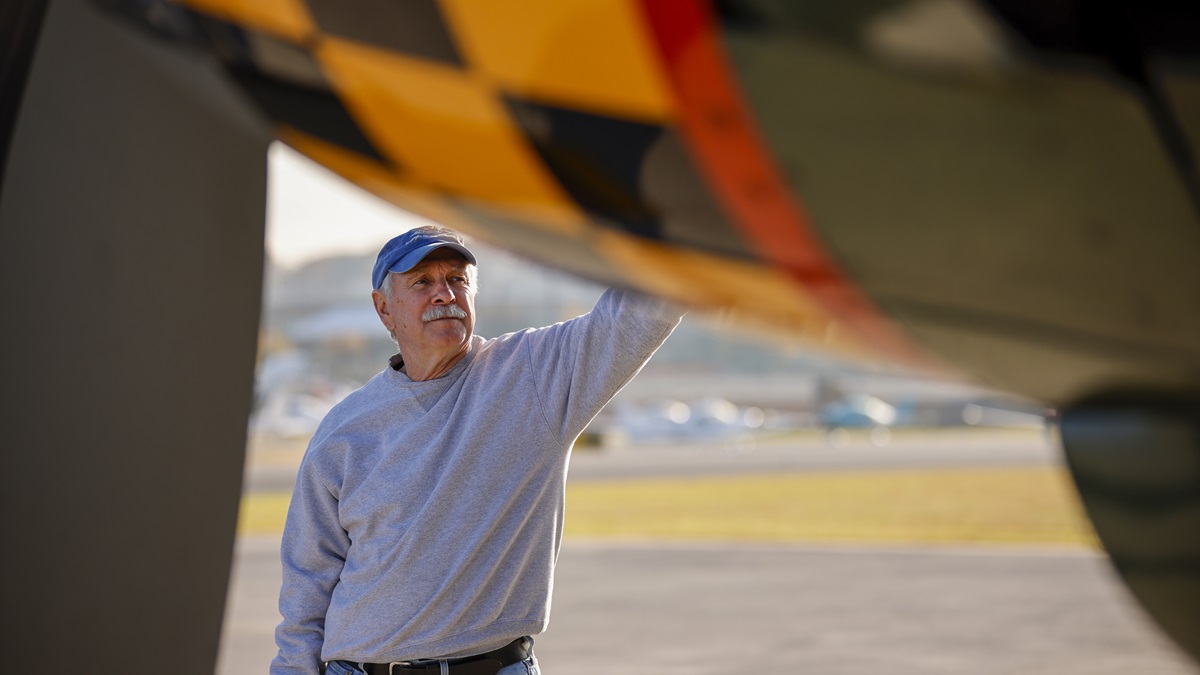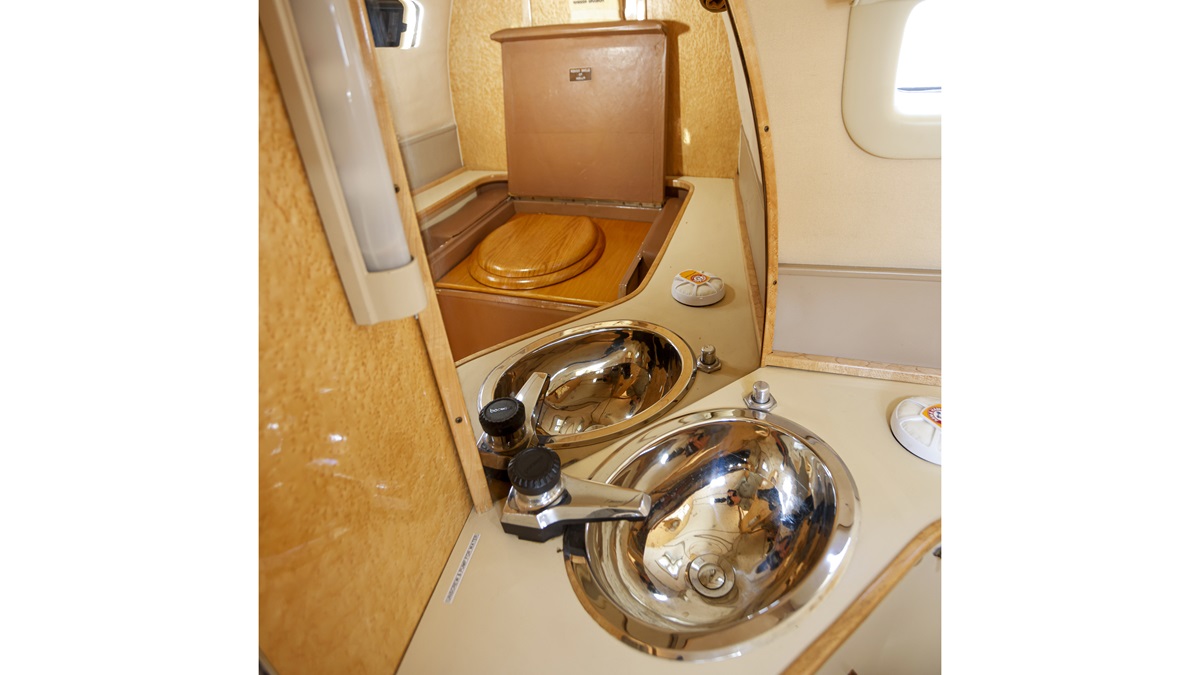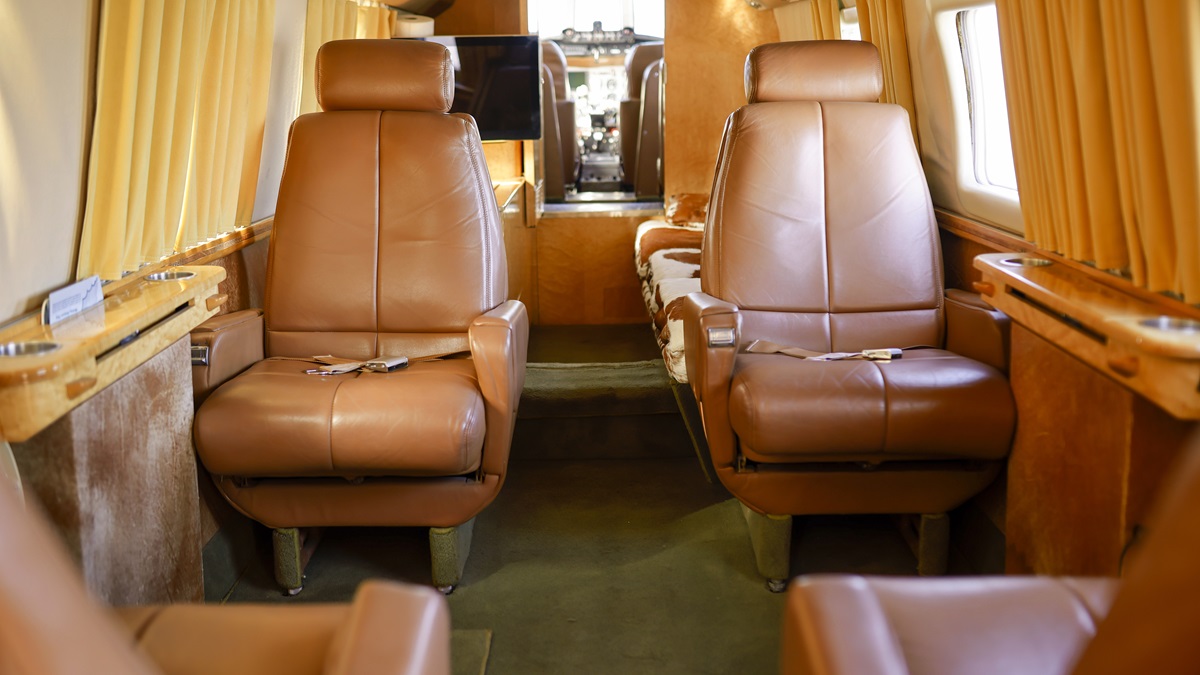Flying anachronism
A timeless airplane with terrible timing
Its 2,500-horsepower radial engines came from the Douglas DC–6; propeller blades and spinners from the DC–7; propeller hubs from the Vought F4U Corsair; landing gear from the Lockheed PV–2 Harpoon, and outer wing panels from a PV–1 Ventura. But all those pedigree components couldn’t save it. The airplane made in San Antonio, Texas, simply arrived on the scene too late.
When the Howard 500 was introduced in 1958, the turbine era was already underway. Purpose-built turboprops with tricycle landing gear like the Gulfstream G-1 were quickly replacing repurposed World War II-era piston aircraft, and they’d soon come to dominate the emerging corporate market. Iconoclastic founder Durrell U. “Dee” Howard was loath to admit it, but his crowning achievement, the Howard 500, was a flying anachronism doomed from day one by market forces. Only 17 of the exceptionally luxurious, ultra-high-performance, stylish piston twins were ever built, and without a critical mass, they never took hold.
The airplane’s lone historical distinction is a testament to terrible timing: The Howard 500 is the last FAA transport-category airplane ever certified with radial engines.
Only two flying examples exist today, and until recently, both were owned by Tony Phillippi, a Minnesota heavy equipment firm owner for whom the airplanes’ aesthetic qualities and unique capabilities outweigh all other considerations.
“The first time I saw a Howard 500, I was toast,” he said. “The hangar doors opened, and I was just awestruck.”
Phillippi’s appreciation of the exotic airplane is more than skin deep. He’s enamored by the elegance and thoughtfulness of the complex system and its artful components. Owning the airplanes is about much more than pride, or transportation.
“These airplanes have enriched my life in ways that I couldn’t have imagined when I started down this path,” he said. “They’ve put me in touch with the most incredible people and provided experiences that, even looking back on them, are simply beyond belief.”
The late Dee Howard himself tearfully thanked Phillippi for giving his favorite airplanes a pampered and highly visible second life. Another high point was a roaring, up-close tour of the Greenland ice cap and fjords in 2012.
“Being associated with these airplanes has been the privilege of a lifetime,” he said.
Phillippi has decided to downsize, however, and in recent years he’s been focused on finding the next caregivers for his beloved airplanes.
The first is Walter Bowe.
Bowe is an accomplished pilot and vintage aircraft collector in Sonoma, California, and, like Phillippi, he leads an international construction firm. Bowe and Phillippi became friends years ago and they’ve discussed the Howard 500s in great detail more recently.
“It felt like a three-year interview process,” Bowe said. “But one day Tony surprised me by saying, ‘You and your wife deserve to be the next owners.’”
They completed the transaction in late 2022, and Bowe flew the new-to-him Howard from Minnesota to California with veteran instructor Brian Van Wagnen. Bowe has been training intensively in the airplane, obtained a type certificate in it, and recently flew it on a business trip to Tennessee.
Bowe describes flying the Howard 500 as “challenging but doable,” and said he plans to use the aircraft much as it was designed: as a business tool for visiting far-flung job sites throughout North America and bringing key people and equipment wherever they need to be.
“There’s a fine line between flying it too much and not enough,” he said. “We’ve got a business plan that aims to find the right balance. I feel honored to be this amazing airplane’s next caretaker.”
Details




Stay on it
Boarding the Howard 500 takes place through a rear door as thick as a bank vault. Multiple latches are a reminder that this is a pressurized airplane made to cruise in the mid-20,000-foot range, although it seldom flies high with Phillippi aboard.
“I like to stay low and see things,” he says.
The wood trimmed interior, plush leather seats, a side-facing couch, and oversized, double-pane windows hark back to the Mad Men period in which Howard 500s were designed and built.
There’s a roughly 10-degree incline walking uphill to the cockpit due to the airplane’s jaunty deck angle. Step over the main spar and into the cockpit and take a seat. In addition to the left and right pilot’s seats, there’s a roomy third chair for an observer on the right side of the cockpit.
The six-pack instrument panel’s most modern navigation instruments are a pair of 15-year-old Garmin 430 GPS/coms. Another nod to modernity is an ADS-B transponder.
“It felt like a three-year interview process,” Bowe said. “But one day Tony surprised me by saying, ‘You and your wife deserve to be the next owners.’”Navigation and pressurization controls are located on a center console between the two pilots. Engine controls are on a center pedestal, and engine instruments are in the middle of the panel where both pilots can see them. A prominent annunciator panel is just below the glareshield, and propeller feathering controls on the far left and right sides.
Forward visibility is surprisingly good for a tailwheel airplane through three thick glass windshield panels. Each pilot also gets a sliding side window.
The four-blade, Hamilton-Standard props are positioned slightly forward of the pilots, but the engines are far enough out on the wings that downward visibility isn’t too restricted.
Pilots Curt Brown, a former NASA space shuttle astronaut and air racer, and Van Wagnen, a retired airline pilot and FAA engineering representative, conduct an extensive briefing prior to engine start. They review everything from standardized verbal callouts to power settings and emergency procedures during an unhurried conversation that was to be repeated before every flight on this multi-day trip.
Starting the 18-cylinder, two-row, Pratt & Whitney engines is a combination of checklist discipline and intuition. Starters turn the props slowly, then the magnetos are switched on, and puffs of white smoke hint that the time is right to enrich the fuel/air mixture.
“They behave a little different depending on the outside temperature, elevation, and whether it’s the first start of the day,” Van Wagnen said. “But they let you know pretty quick whether they’re going to be cooperative or cantankerous.”
They’re cooperative today, and both start eagerly, rocking the airframe with the gentle motion of restrained power.
Van Wagnen is in the right seat for this first leg, and the two pilots alternate throughout the journey. Van Wagnen seems sincere when he says he enjoys right-seat duties as much as the left.
Taxiing is a surprisingly twitchy affair for such a large airplane due to the Howard 500’s notoriously touchy brakes.
“They’re the grabbiest brakes of any airplane I’ve ever flown, by far,” says Brown, a former U.S. Air Force pilot. “Apply what seems like a minimal amount of pressure and it’s too much.”
Once the oil in each engine is warm, the pilots perform high-power runups that include testing the manual and automatic prop feathering systems, shifting the superchargers, positioning cowl flaps and oil doors, and testing the anti-detonation system—a liquid spray system that cools cylinders directly.
Once lined up with the runway centerline for takeoff, the pilots advance the left engine throttle lever first, followed by the right. The left engine powers a massive generator, so it takes longer to spin up. With both engines at about 51 inches of manifold pressure, the ground run with a moderate load at nearly standard atmospheric conditions takes about 18 seconds and covers nearly 2,000 feet. Brown holds the airplane in a tail-low attitude, and the main wheels lift off at about 100 KIAS.
Gear retraction takes about three seconds, and by pattern altitude the airplane has accelerated to 130 knots. By the time takeoff flaps are retracted, it’s reached 150 knots in a shallow, five-degree climb at a rate of 1,200 feet per minute.
The noise level in the cockpit is moderate during takeoff and low in the insulated cabin where headsets aren’t used at all.
At 7,000 feet the pilot levels off and configures for cruise. At 2,300 rpm and 36 inches of manifold pressure, the Howard lopes along at 200 KIAS (230 KTAS) while consuming 100 gallons of avgas per engine per hour.
Control forces are heavy in roll and moderate in pitch and yaw. Ailerons are manual, and elevator and rudders are hydraulically boosted.
“The rudder boost is absolutely essential,” Van Wagnen says. “I don’t think anyone’s got legs strong enough to provide enough rudder pressure to keep the airplane flying straight in an engine-out situation.”
Approach and landing are workload intensive for both pilots. With landing gear and Fowler flaps extended, Brown targets 105 KIAS on final approach. The main wheels touch down at about 95 KIAS, and the pilots wipe off any remaining power and bring the tailwheel to the runway surface at about 75 KIAS.
The wide wheelbase helps the airplane track straight, but the pilots stay attentive throughout the deceleration process.
“It’s still a taildragger,” Van Wagnen says. “You’ve got to stay on it all the time.”
Too good to be true
Caring and feeding for a Howard 500 on the road takes logistical planning and effort. The pilots brought about 50 gallons of engine oil in five-gallon containers stored in the airplane’s belly on this trip. They also arranged to refill those containers with their preferred brand at one of the stops along the way.
“It doesn’t make any sense to buy oil by the quart,” Van Wagnen says. “You wouldn’t have enough bottles. You need to get it by the barrel.”“It doesn’t make any sense to buy oil by the quart,” Van Wagnen says. “You wouldn’t have enough bottles. You need to get it by the barrel.”
There’s also anti-detonation fluid to consider. It’s not widely available, and it allows pilots to safely use the full rated power of 2,500 horsepower per engine instead of 2,000 horsepower without it.
Van Wagnen brings tools on every trip, and he’s constantly tightening mechanical items that tend to work themselves loose from the airplane’s constant vibration. The pilots also call ahead to make sure there’s enough avgas available at each location. The airplane holds more than 775 gallons of fuel, so filling it can drain a fuel truck, or an airport fuel tank.
Another factor to consider when taking a Howard 500 cross-country and trying to stick to a schedule is the additional time required at each stop to answer questions and hear stories from people who see the airplane and are irresistibly drawn to it. Few seem capable of resisting its allure.
“It’s such a rare airplane that the main question people have is, ‘What is it?’” Van Wagnen says. “Put that mystery together with the Howard 500’s size, its sound, and its unique appearance and there’s just something about it that just captures people’s imaginations. It’s impossible to ignore.”
“I understand that sentiment because, frankly, I feel the same way,” he says. “The Howard 500 is a survivor from a bygone era. It requires dedication to learn the airplane’s systems and nuances, and it takes commitment to maintain the airplane and stay current in it. But the rewards are indescribable.
“I started out as an airport kid at 14 years old just wanting to learn everything I possibly could about airplanes and flying. If you’d told me then that someday I’d actually get to fly an airplane like this, well, that would have seemed too good to be true.
“All these years later, I step back sometimes and pinch myself because, honestly, it still seems too good to be true.” 













